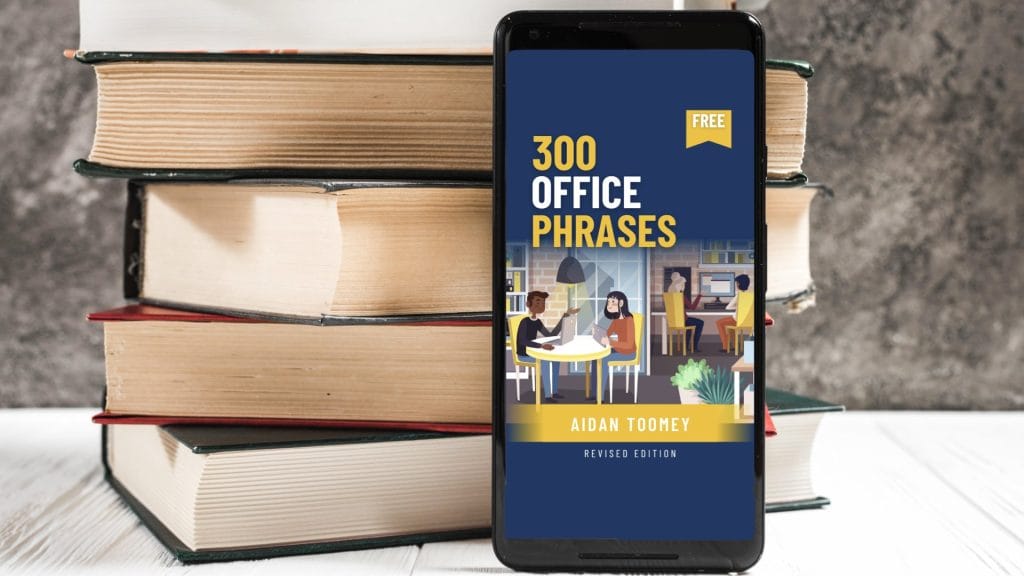
Your presentation’s opening 30 seconds can make or break your entire talk. Research shows that audiences form their impression of you within the first minute – yet most professionals rush through their introductions without proper preparation.
Master these proven opening phrases to establish credibility and engage your audience from the very start.
Quick Reference Guide: Essential Presentation Starting Phrases
- Welcome phrases: “Good morning everyone”, “I’m delighted to welcome you all”
- Self-introduction: “Allow me to introduce myself”, “I’m the [your position]”
- Topic introduction: “Today, I’m going to be talking about…”, “This presentation focuses on…”
- Relevance statement: “It’s an important subject because…”, “By the end of this talk, you will…”
- Objective clarification: “The aim of this presentation is to…”, “During the next [time], we’ll be…”
Please like and follow us on YouTube, and LinkedIn. And don’t forget –
FREE Resources to Support Your Learning
Grab our Ultimate 300 Business English Phrases for Communication in the Office ebook further below. Visit our FREE Business English lessons page.
Video Tutorial: Starting Phrases for Your Presentations
Whether you’re presenting to colleagues, clients, or at international conferences, these opening phrases will help you establish credibility and engage your audience from the very first words.
Watch now to transform your presentation openings from awkward moments into powerful opportunities to connect with your audience.
How do I structure the start of my Presentation?
Firstly, you want to establish a rapport with your audience. So, you open proceedings by welcoming them.
You continue building rapport and momentum by introducing yourself.
You can then explain what subject matter/topic you will cover and why it is particularly relevant.
Finally, every Presentation has an objective which is the purpose of your Presentation. It’s at this point you bring this into play and relay this to your audience.
It’s good practice to follow a structure. It makes life easy for yourself, and it ensures your audience has direction and clarity.
It’s also useful to know the Phrases for starting your Presentation. I’m going to teach you these now.
Phrases to Welcome your Audience
“Hi/Hello everyone.’
“Good morning/Good afternoon, everyone.”
“I’m delighted to welcome you all here today.”
“Thank you for attending today.”
“It’s great to see so many people in the room today.”
Pro Tip: Match your greeting to the formality of the occasion. For high-stakes presentations, use “I’m delighted to welcome you” rather than a simple “Hello everyone.”
Example: “Good morning everyone. I’m delighted to welcome you all to our annual strategy meeting. It’s wonderful to see both familiar faces and new team members here today.”
Phrases to Introduce Yourself
“Allow me to introduce myself. My name’s [Rick Singleton.]”
“Some of you may already know me. I’m [Rick Singleton.]”
“I’m the [Head of Product Design.]”
“I’m here today in my role of [Head of Product Design.]”
Pro Tip: Always mention your position or expertise to establish credibility, but keep it brief. Your introduction should take no more than 15-20 seconds.
Example: “Allow me to introduce myself. My name’s Sarah Johnson. I’m the Head of Market Research, and I’ve been analysing consumer trends in our industry for the past eight years.”
Phrases to Introduce your Subject Matter
“Today, I’m going to be talking about [Subject Matter.]”
“The Subject/Topic today is …”
“This Presentation focuses on [Subject Matter.]”
“I’d like to present today on [Subject Matter.]
Pro Tip: Use specific language rather than vague terms. Instead of “marketing strategies,” say “digital marketing strategies for small businesses in the healthcare sector.”
Example: “Today, I’m going to be talking about our new customer retention programme. This presentation focuses specifically on how the programme will help us reduce churn rates in our enterprise segment.”
Phrases to Explain the Relevance of the Subject Matter
“It’s an important subject for you/us because…”
“Today’s subject is of special interest to those of you/us who…”
“By the end of this talk, you will be familiar with…”
Pro Tip: Connect your topic directly to your audience’s needs or challenges to immediately capture their interest.
Example: “It’s an important subject for us because our customer feedback surveys show that retention is our biggest challenge this quarter. Today’s subject is of special interest to those of you who manage client relationships, as you’ll gain practical tools to strengthen these connections.”
Phrases to Explain your Objective
“The aim/purpose/objective of this presentation is to…”
“Today, I’d like to give you an overview of…”|
“During the next [25 minutes,] we’ll be….”
“This [morning] I’m going to be talking to you about…”
Pro Tip: Always mention the approximate duration of your presentation so the audience knows what to expect. This shows respect for their time.
Example: “The objective of this presentation is to help you implement our new CRM system effectively. During the next 30 minutes, we’ll be looking at the key features, examining case studies, and discussing the implementation timeline.”
Combining Phrases for Maximum Impact in Professional Presentations
The most effective presentation openings combine elements from each category. Here’s a complete example:
“Good morning everyone. I’m delighted to welcome you all to today’s session. Allow me to introduce myself – I’m David Chen, Head of Operations for the APAC region. Today, I’m going to be talking about our new supply chain optimisation initiative.
It’s an important subject for us because it directly impacts our ability to meet the growing demand in emerging markets. The aim of this presentation is to outline the implementation plan and highlight how each department will contribute to its success. During the next 40 minutes, we’ll be exploring the key challenges, proposed solutions, and expected outcomes.”
Common Presentation Opening Mistakes to Avoid
When starting your presentation, avoid these common pitfalls:
- Beginning with an apology: “Sorry, I didn’t have much time to prepare…” undermines your credibility immediately
- Starting with “So…”: This casual opener lacks impact in professional settings
- Diving straight into content: Without proper introduction, your audience may feel disconnected
- Speaking too quickly: Nervousness often leads to rushing – take a deep breath and pace yourself.
Customising Your Opening for Different Audiences
For formal settings:
Use more structured phrases like “I’m honoured to present to you today on the subject of…”
For international audiences:
Speak clearly, avoid idioms, and consider briefly acknowledging the multinational nature of your audience.
For virtual presentations:
Add engagement elements: “Before we begin, please type your location in the chat so I can see who’s joining us today.”
Real-World Examples: Before and After
Before: “Um, so today I’m going to talk about our quarterly results.”
After: “Good morning everyone. I’m Sarah Johnson, Head of Finance. Today, I’ll be presenting our quarterly results, which show promising growth in our key markets. By the end of this presentation, you’ll understand our current financial position and the strategic opportunities ahead.”
Presentation Opening Phrases: Frequently Asked Questions
How long should my presentation introduction be?
Your introduction should typically be 1-2 minutes or about 10% of your total presentation time.
Should I memorise my opening phrases?
Practice your opening until it feels natural, but don’t memorise it word-for-word as this can sound robotic.
How can I overcome nervousness when starting my presentation?
Take a deep breath, make eye contact with friendly faces in the audience, and remember that a well-structured opening gives you confidence.
Is it appropriate to start with a joke?
Only if it’s relevant to your topic and appropriate for your audience. In most business settings, a brief relevant anecdote works better than a joke.
Explore More Business English Resources
Looking for more Business English tips, courses, and free resources? Visit our LinkTree page to access everything in one place: https://linktr.ee/toomeybusinessenglish
Take Your Skills to the Next Level
If you’re looking to further improve your presentation skills, consider enrolling in our “Improve Your Business English: English for Presentations” course! Designed for non-native speakers, this course will help you master essential phrases and techniques to deliver impactful presentations with confidence.
Key Benefits:
- Learn over 200 essential phrases for every part of a presentation.
- Gain practical skills through interactive activities and quizzes.
- Enjoy lifetime access to course materials and updates.
- Receive a certificate of completion to showcase your skills.
Who Should Enroll?
This course is perfect for professionals, students, and anyone looking to enhance their presentation skills in English.
Enrol today and get the special discount at:- https://toomeybusinessenglish.com/presentations-business-english/
Ready to Master Business Presentations in English?
Book a free 15-minute consultation to discuss how personalised coaching can enhance your presentation skills and boost your confidence. Our targeted training has helped professionals from over 30 countries improve their business English and effectively handle presentation questions.
Find out more at: Business English Training
If You Liked This Article, Try These Next!
- Cut the Jargon in Presentations: Using Business English
Learn how to simplify your language for clearer communication in presentations. - Learn How to Do an Elevator Pitch Using Business English
Master the art of delivering concise and impactful elevator pitches. - Placement Phrases for Presentations Using Business English
Discover essential phrases to effectively position your ideas during presentations. - Using Formal and Informal Phrases to Start Your Presentation
Learn how to effectively engage your audience from the very beginning of your presentations.
FREE! THE ULTIMATE 300 BUSINESS ENGLISH PHRASES FOR COMMUNICATION IN THE OFFICE

